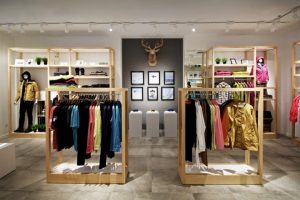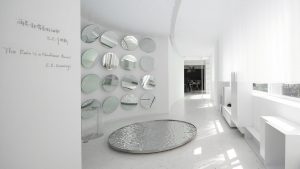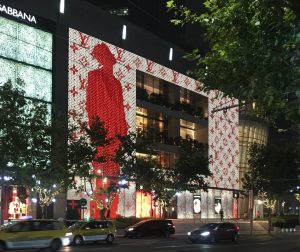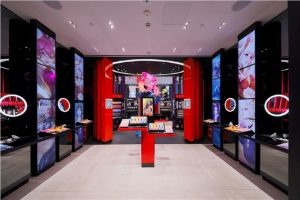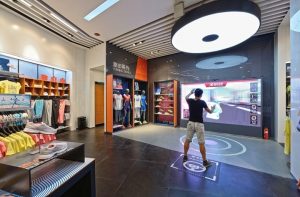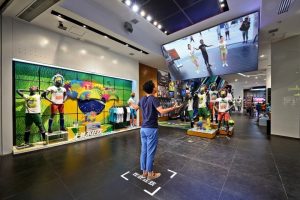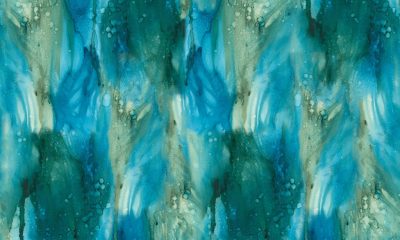Having a visual identity that appeals to locals is not only essential but imperative in any market. In an age where pictures are constantly being posted on social media your store design is a key part of your visual identity. An easily identifiable design that leaves a long lasting and favorable impression can go a long way in establishing yourself in the Chinese Market.
Often brands fail to understand Chinese aesthetic tastes and local mind-sets. Things that are considered inherently Chinese in the Western world may be old fashioned in China and not have the impact that brands may like. A localized visual identity allows consumers to connect and remember your brand. There are a few ways in which you can be innovative and still implement Chinese elements into both your visual identity and store design.
Chinese Consumers
Trend reports show that Chinese consumers purchase goods based on value. The value of a good is not related to the value of price but rather, the value it brings to their lifestyle and the quality of the good itself. To attract these consumers, a brand’s visual identity needs to showcase the quality of their goods while also relating to the lifestyle of their consumers.
Common lifestyle trends for Chinese consumers include, pop-culture, fitness and health, and technology. Consumers desire to live life styles that are as luxurious as their favorite KOLs, healthy, and connected to modern technology. Chinese consumers are more willing to purchase goods that most directly relate to them. Apart from online streams used to connect with consumers, retailers are able to also reach them through affective retail design and strong visual identities.
3 Keys Creating a Strong Visual Identity
Advertisement
-
Brand Story
In recent years annual spending of leisure travel abroad has increased by 1326% since 2001 for Chinese tourists (Telegraph). Chinese consumers value the opportunity to explore the world around them and through this build stronger connections to foreign brands. Therefore, for international brands it is important to keep this a strong part of their brand identity.
Building connections to the brand story through visual identity design helps to accomplish just this. Halti, a Finnish ski wear brand, adapted their visual identity with cool colors, clean lines, and dynamic lighting creating a clean and modern brand image. Design elements including curvatures in the ceilings and walls and a wooden cutout of a woodland animal connect to the brand’s identity and Finnish culture. To further connect to the brand’s story, a photo wall features pictures of the Finnish flag and famous ski professionals.
The window display also helps to set the tone of the brand through the visual identity design. An LED screen plays videos of skiers wearing Halti products whilst skiing. Videos from the Winter Olympics help the Chinese consumers to relate Halti’s products to sporting events that China takes pride in competing.
-
Color Palette
Color helps to create brand recognition and visual interest. Research suggests it can affect everything from brand perception to purchasing intent; more recent research goes even further stating that 62-90% of consumer decisions are based on color. Red, yellow and gold are strong colors used in Chinese retail that connect with Chinese tradition but do not necessarily have the greatest impact on the visual identity of a brand. The choice of color palette in retail design should be bold enough to create attention, while also connecting to modern motifs. The use of these colors should tie to the overall brand identity design or new products released as part of a collection.
This By Jove flower shop in Hangzhou creates a clean and modern feel by using only white. The white helps to highlight the clean lines of the architecture and the added use of mirrors creates a modern yet reflective feel. The white serves as a symbolism to the brand’s identity that allows customers to come in and create their own unique bouquets in an inviting space.
Color can also be used in the visual identity design of a store to highlight new product launches. A growing trend in retail is to temporarly change the façade of the retail store through colorful and artistic stickers that tie to the new products. These two luxury retailers utilized this idea in Shanghai. Burberry recently launched a new print for their products. To make a statement and create excitement for the new product, they covered the outside of their store in a sticker print of the product itself.
Advertisement
Louis Voution did something similar with a sticker that changed their logoed façade red, featuring the mysterious ‘Red Man.’ The goal of this was to draw consumers to the store by making them notice the building in a new way. It also highlighted some of their new products in the vibrant red color.
China is a modern country and so is the color palette. It is important to be innovative with colors so that they are not only modern and connect with the average Chinese consumer but are also an extended part of the story of your brand and products.
-
Technology
The latest trend in China for store design is a clean, modern and premium look. Interiors are a new playground for aesthetic expression in China, especially so on the inside of stores.
Consumers want to be connected to brands both online and offline. Finding the balance between the two can be challenging. In the new age modern world, Chinese consumers demand convenience, unique experiences and want brands that connect with their lifestyle. Chinese motifs such as simple lanterns, dragons and the great wall in the background are overdone and do not connect to the modern Chinese lifestyle. Chinese consumers are focusing on the present and look towards the future rather than back on the past.
Mac connected to Chinese customers with their rebranded visual identity design in their Shanghai store incorporating popular video game characters into the overall store design. The use of VR mirrors to test products and learn more product information enables the customers to interact with the product more. Direct partnerships with a popular game “Glory to the King” have allowed them to adapt their visual identity and build stronger connections to female gamers, and cosplay fans. Other instore features focused on customizable lipsticks and connected WeChat campaigns brings consumers connectivity offline and online in a seamless way.
Xtep in Changsha also managed to do this well as they incorporated the ability to experience wearing their shoes in their sport of choice into the store design by setting up AR and VR on screens inside the store.
Advertisement
Creating Impact
Different markets have different buying and eating habits, it thus makes sense that when targeting a new market, you have a new strategy. Utilizing thoughtful color palettes, technology, and telling your brand story in a meaningful way creates a strong visual identity that connects to Chinese consumers. In an increasingly globalized world modernity is progressively becoming a shared aesthetic. Modernity with a Chinese twist is the best way to approach the Chinese Market.
A good visual identity and store design is not only strong enough to grow with you but is also one you can build upon as you expand. Connecting with Chinese consumers through their lifestyle, technology, and favorite influencers is an effective way to create impact through visual identity design.


 Headlines1 week ago
Headlines1 week ago
 Headlines1 week ago
Headlines1 week ago
 Headlines1 week ago
Headlines1 week ago
 Designer Dozen2 weeks ago
Designer Dozen2 weeks ago
 Headlines6 days ago
Headlines6 days ago
 Headlines3 days ago
Headlines3 days ago
 Designer Dozen7 days ago
Designer Dozen7 days ago
